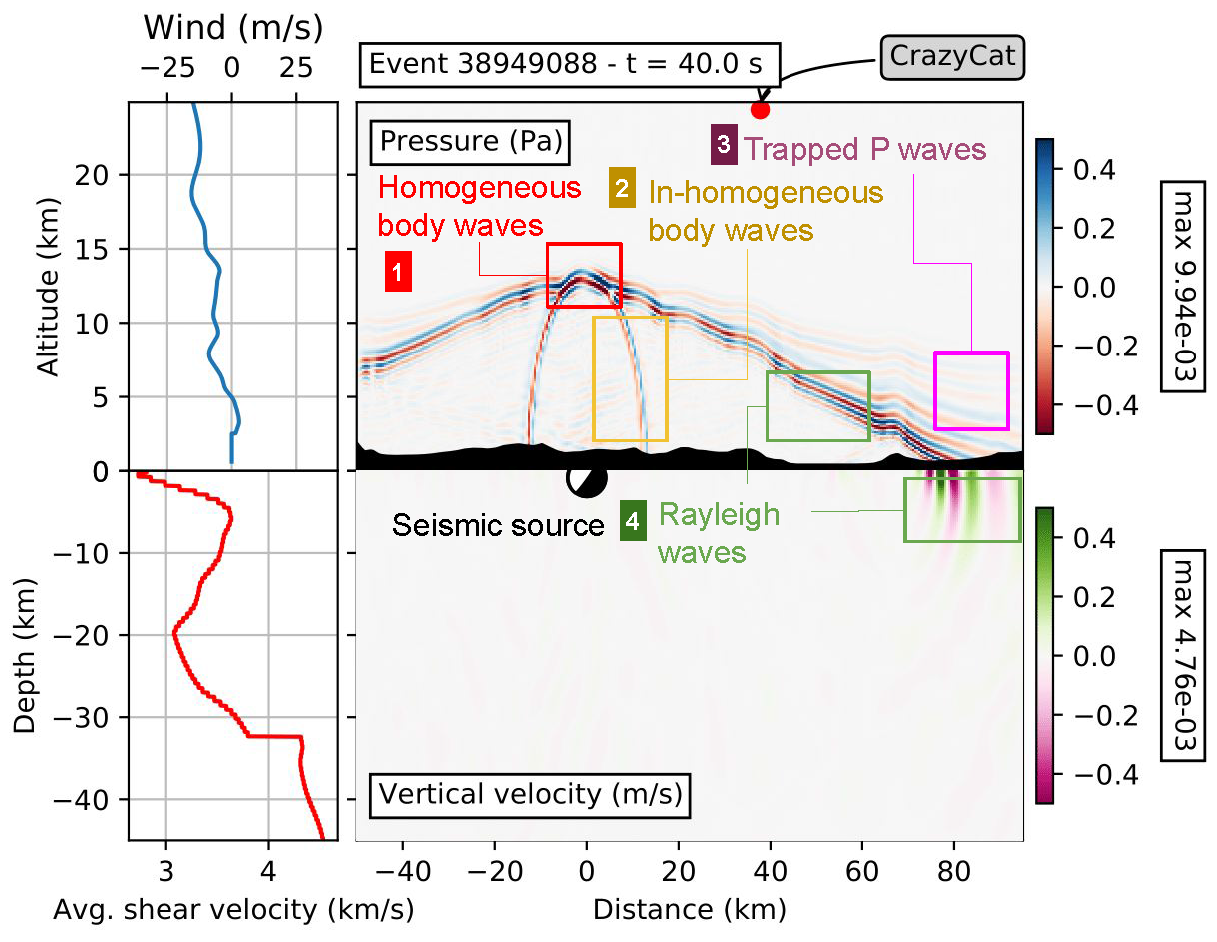References:
[1] Q. Brissaud, et al. The first detection of an earthquake from a balloon using its acoustic signature. Geo-phys. Res. Lett., 2021.
https://doi.org/10.1029/2021GL093013
[2] Krishnamoorthy, S., et al. (2018). Detection of artificially generated seismic signals using balloon‐borne infrasound sensors. Geophysical Research Letters, 45(8), 3393-3403.
[3] Garcia, R. F., et al. (2021). An active source seismo-acoustic experiment using tethered balloons to validate instrument concepts and modelling tools for atmospheric seismology. Geophysical Journal International, 225(1), 186-199.
Our understanding of Earth’s internal structure comes primarily from seismic waves that provide important constraints on seismic-velocity properties. However, traditional inversion methods can not be implemented in regions of limited seismic-station coverage. This lack of seismic data greatly limits our understanding of certain physical processes on Earth (e.g., subsurface polar processes) and the origin and evolution of other planets in the solar system.
However, the mechanical coupling between the ground and its atmosphere enables the seismic energy to be transmitted into the atmosphere as low-frequency acoustic waves carrying information about the seismic source and the subsurface properties. While infrasound is traditionally recorded at ground-based stations, which suffers from the same in-situ deployment limitations as seismic stations, recent studies have demonstrated that balloon platforms can be used to monitor seismic activity from the atmosphere at a low operational cost (see [2] and [3]). Balloon-borne seismology is a new dynamic field considered to be the only way to investigate Venus’ interior structure (see [4]). This technique may allow for the detection of seismically-generated pressure disturbances on Venus, where temperature and pressure conditions are far more clement that at the surface and longer mission lifetimes are likely.

However, the feasibility of such a technique has yet to be established through the detection of ground motion following an earthquake using a freely-floating balloon. In [1], we demonstrate the first detection of an earthquake from a high-altitude balloon. We explore the dependence of the pressure signal seen by the balloon on parameters such as the magnitude, focal mechanism, and location of the earthquake, surface topography, and atmospheric structure. We also show how the signal recorded at the balloon can be used for estimates of subsurface properties.
This observation has important implications for future Venus missions. Multiple NASA proposals have already funded to explore the feasibility of using balloons to investigate Venus’ interior structure. The experience gained during our study in terms of balloon deployement, data analysis, and numerical simulations will pave the way to develop new innovative techniques to reduce instrumental and environmental noise, and extract dispersion properties from the acoustic signatures recorded at the balloon.
